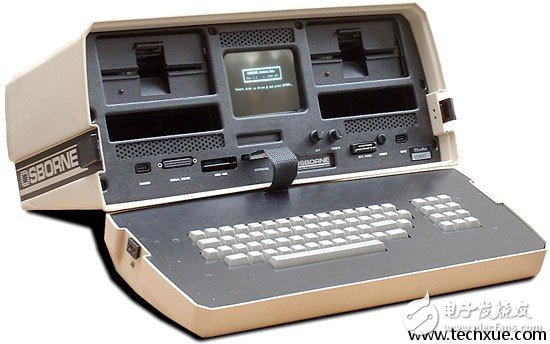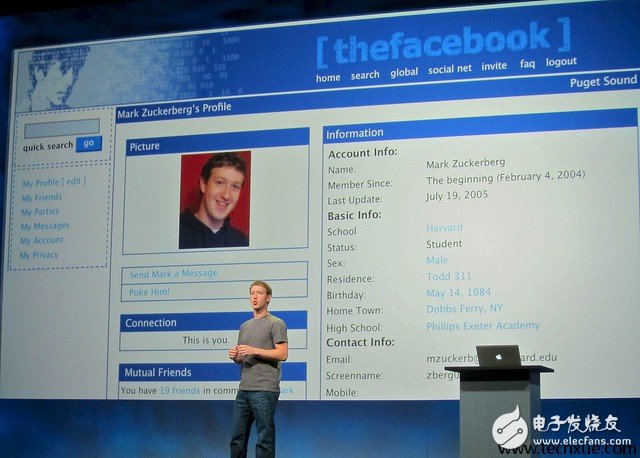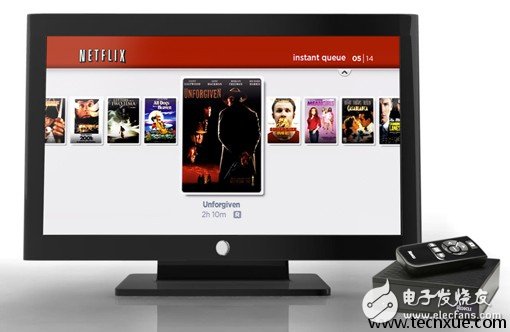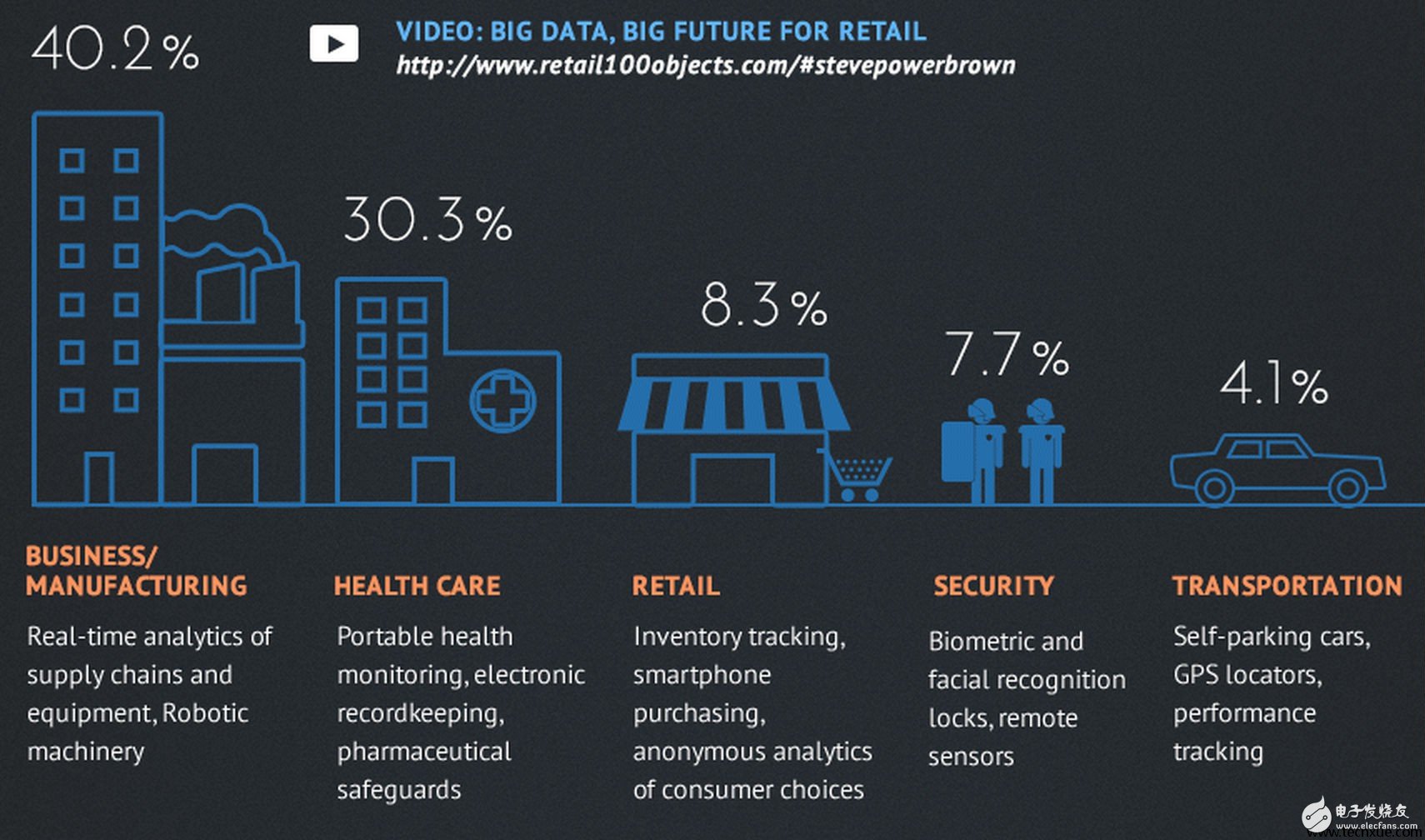The Internet of Things (IoT), the Internet connection extends to the network of information exchange and communication between objects. TECH2IPO takes you back to the past to understand the history, current status, and future challenges of the Internet of Things.
Note: The research process of this article is long. If there is any delay, please let us know and we will be very happy to amend it.
IoT Chronicle
1860s to 70s
In 1968, Intel, the world's largest manufacturer of semiconductor chips, was founded in Santa Clara, Silicon Valley, USA. The computer and Internet revolution brought about by it has changed the whole world.
In 1971, Intel introduced the world's first Micro-Processor Intel 4004.
In 1971, for the first time, IBM successfully established a host-to-host interactive connectivity system between the University of Michigan and Wayne State University, creating the world's first networked host.
In 1974, the TCP/IP protocol came out. In the same year, the world's first networked ATM (automated teller machine) was born. Since then, people's "money" has been connected to the Internet.
In 1977, the world's first home modem, the 80-103A, was born. At the time, 13 devices were connected to the network worldwide.
'80
In 1981, the world's first "laptop computer" Osborne 1 was designed and built by Adam Osborne's company Osborne Computer Corpora TIon, weighing 10.7 kg, at a price of $1,795, running the CP/M 2.2 operating system. At the time, 188 devices were connected to the network worldwide.

In 1989, former European Nuclear Research Organization employee, British scientist TIm Berners-Lee drafted the basic protocol framework of the World Wide Web, and the World Wide Web (WWW) was born.
1990s
In 1995, Hotmail was founded and officially launched in 1996, becoming the world's first web-based email service. At that time, about 310,000 devices were connected to the network around the world.
In 1998, Stanford University's Ph.D. student, Larry Page and Sergey Brin, co-founded Google. In the second half of 1999, the Google search engine was officially launched.

In 1998, the Japanese game Sega released the Dreamcast game console, which was the last game hardware product in Sega's history, and the world's first game console capable of networking. The operating system uses Windwos CE 2.0 with a built-in IE 4 browser. At this point, the game console is connected to the network.
2000 to 2010
The new millennium has come, and the computer science community has ushered in a difficult problem: the computer year 2000 problem, also known as the "millennium bug." In the last century, due to the high cost of computer memory, using 4 digits to represent the year would take up a lot of memory space. To save costs, many computer systems use two digits to represent the year. And when these devices involve cross-century date processing operations, they can eventually lead to system dysfunction or even collapse. At the time, approximately 93 million devices worldwide were connected to the network.
At the end of 2000, Kyocera and Palm released the world's first smartphone, Palm Kyocera (known as Kyocera Palm). Palm was once the leading brand in the smartphone industry, relying on well-known smart phone models such as Treo to become popular around the world. At this point, the mobile phone is connected to the network.

In the same year, LG announced its entry into the Internet refrigerator sector. Although it is now the same as a joke, since then, major manufacturers have begun to work on the refrigerator to the Internet.
In 2001, BMW released the fourth-generation 7-series sedan, which featured "Connected Drive." At this point, the car is connected to the network.
In 2002, a group of researchers at the Massachusetts Institute of Technology made a rather funny product: Ambient Orb. This product can network monitor the Dow Jones Industrial Index, weather, and a variety of other data, and change the color as the data moves.

In November 2002, Microsoft launched the Xbox Live online battle platform for Xbox game consoles. Since then, the idea of ​​players playing online games and collaborative games on the game console has become a reality.
Beginning in 2003, the Guardian, Scientific American, and the Boston Globe began using the Internet of Things to call the Internet of Things. In the same period, RFID was widely used in businesses such as retailers led by Wal-Mart.
In 2004, Harvard University student Mark Zuckerberg launched Facebook in his dorm and later became the world's largest online social networking site. With more than 1 billion users, the information and uploaded pictures that we share every day are in the hundreds of millions.

In 2004, the world's first smart meter was born. At this point, infrastructure such as hydropower is connected to the network.
In the same year, Sony LIBRIé was born, the world's first e-book reader. At this point, the book is connected to the network.
In 2007, the Amazon Kindle e-book reader was born, and later became the world's most popular e-book reader.
In 2008, the concept of the Internet of Things was recognized by the European Union, and the first section of the European Internet of Things Conference was held.
In 2008, Roku teamed up with Netflix to launch the Roku Netflix Player set-top box, the world's first smart TV product. At this point, the TV, connected to the network. At the time, there were more than 2 billion devices in the world connected to the Internet.

In 2008, the world's notebook sales surpassed desktops for the first time.
After 2010
In 2010, Google launched Google TV to better integrate TV and Internet entertainment content, add Internet search to traditional TV, support watching TV while surfing the Internet, using Android phones as remote controls, and running Android. application. At this point, people's furniture life has become more colorful because of the integration of the Internet and household electrical appliances.
In the same year, former Chinese Premier Wen Jiabao publicly stated that the Internet of Things is an important industry in China and announced that it will make huge investments in the Internet of Things industry.
In the same year, Apple released the world's first consumer-grade tablet PC iPad. At this point, the tablet PC officially took off, and began to replace the desktop with the laptop. At the time, there were approximately 5 billion devices in the world connected to the network.
In 2011, IPV6 (Internet Protocol Version 6) was released. This new Internet Foundation Protocol will allow 2 128-bit Internet addresses to be created and distributed, approximately 340, 282, 366, 920, 938, 463, 463, 374, 607, 431, 768, 211, 456 addresses.
The meaning of this number: With IPV6, we can assign an address to all atoms of all living organisms on the whole earth, and the remaining addresses are enough to distribute to more than 100 Earth.
The Arduino open source electronic device platform has matured and become a solution for many enthusiasts of manual electronic products. At the same time, it also means more small IoT can connect to the device.
Companies such as Samsung, Google and Nokia announced that future NFC modules will become standard in mobile phones.
The status quo and future of the Internet of Things
According to data provided by Intel, in 2014 more than 1.4 million computers were purchased per day, and more than 80% of them used Intel's core or various other products.

It is estimated that by 2015, there will be 15 billion connected devices worldwide.
It is estimated that by 2020, there will be more than 200 billion connected devices worldwide, and more than 4 billion people will enjoy online life. By then, everyone will have about 26 smart items, including not only cars, houses, keys, phones, computers, health care products, etc.
output value
According to current data, most of the IoT terminals—smart items—are not in people's homes or in their hands, but in the industrial, commercial, and healthcare industries. The reason is that participants in this part of the industry need to monitor key data such as their inventory and machine operation in real time to ensure operation, improve operational efficiency, reduce costs, and even save lives.
According to M2M strategic data analysis, McKinsey, and the New York Times, the total value of the global IoT industry will reach 6.2 trillion US dollars by 2025, including $2.5 trillion in health care and $2.3 trillion in industrial production. . Other areas are retail, security and transportation.

Internet of Things map
The smallest IoT device: smart dust.
Ultra-microcomputers that are smaller than dust will likely appear and be walked around the world in a variety of ways. The use will be very broad, including and including not only geographic surveys, air pollution analysis, but even individual physical analysis.
The largest IoT device: the entire city
Dublin, the capital of Ireland, has distributed a number of detectors for various purposes to all corners of the city to create a real-time smart city map. Anything happens anywhere, and the authorities are able to react quickly to avoid and delay the crisis.
IoT devices that have entered people's lives: smart door locks, smart buildings.
Smart door locks can be unlocked and locked via a smartphone. The Ministry of Higher Education of Saudi Arabia has installed intelligent control equipment throughout the building to ensure that the people working in it can feel comfortable while saving energy for the society.
IoT devices that have not yet entered people's lives: heart-control devices, high-tech robots, and Facebook for all items.
Although IoT devices have been able to extract some of the key information from the human body, the current use of human minds—yes, minds, to control mechanical devices—is still a great idea that cannot be achieved. If such a beautiful thing really happens, it will bring about tremendous changes in the life of all mankind.

Perhaps one day in the future, robots connected to the hub network will be able to learn from people → learn from each other → rely on self and/or collective consciousness to solve scientific problems. Of course, I hope they will not make an uprising decision...
Technology media TechCrunch once said that the ultimate goal of the Internet of Things is to become a centralized, unified network platform for all real-life items, just like Facebook for items.
The challenge of the Internet of Things?
The Internet of Things is known as the third wave of the world information industry revolution, which will profoundly influence and change people's production and life. With the development of the Internet of Things technology, people are also worried that more and more devices will be connected to the Internet, which will pose a threat to their privacy and security.
The Internet of Things obtains information through the sensing layer, transmits and integrates it through the network, and aggregates and organizes data at the back end for people to research and use. But without a large and comprehensive security system, the negative impact of the Internet of Things will far outweigh the benefits: eavesdropping, fraud, cloning, hard cracking, DDoS attacks, etc...
And all the good and ugly needs to be practiced by each of us.
Are you ready to face the Internet of Things?
For lithium iron phosphate(LiFePO4) power battery system with brand of Taihang Jiaxin, it has the advantages of long cycle life, high rate of discharge performance, good safety, available for the requirement for Fast Charging and so on.
Using self-developed Battery Management System (BMS) which has the functions of advanced battery self-management, communication, alarm and other functions.

Lifepo4 Battery Pack,Lifepo4 Battery Pack 12V,24V Lifepo4 Battery Pack,48V Lifepo4 Battery Pack
Xinxiang Taihang Jiaxin Electric Tech Co., Ltd , https://www.chargers.be